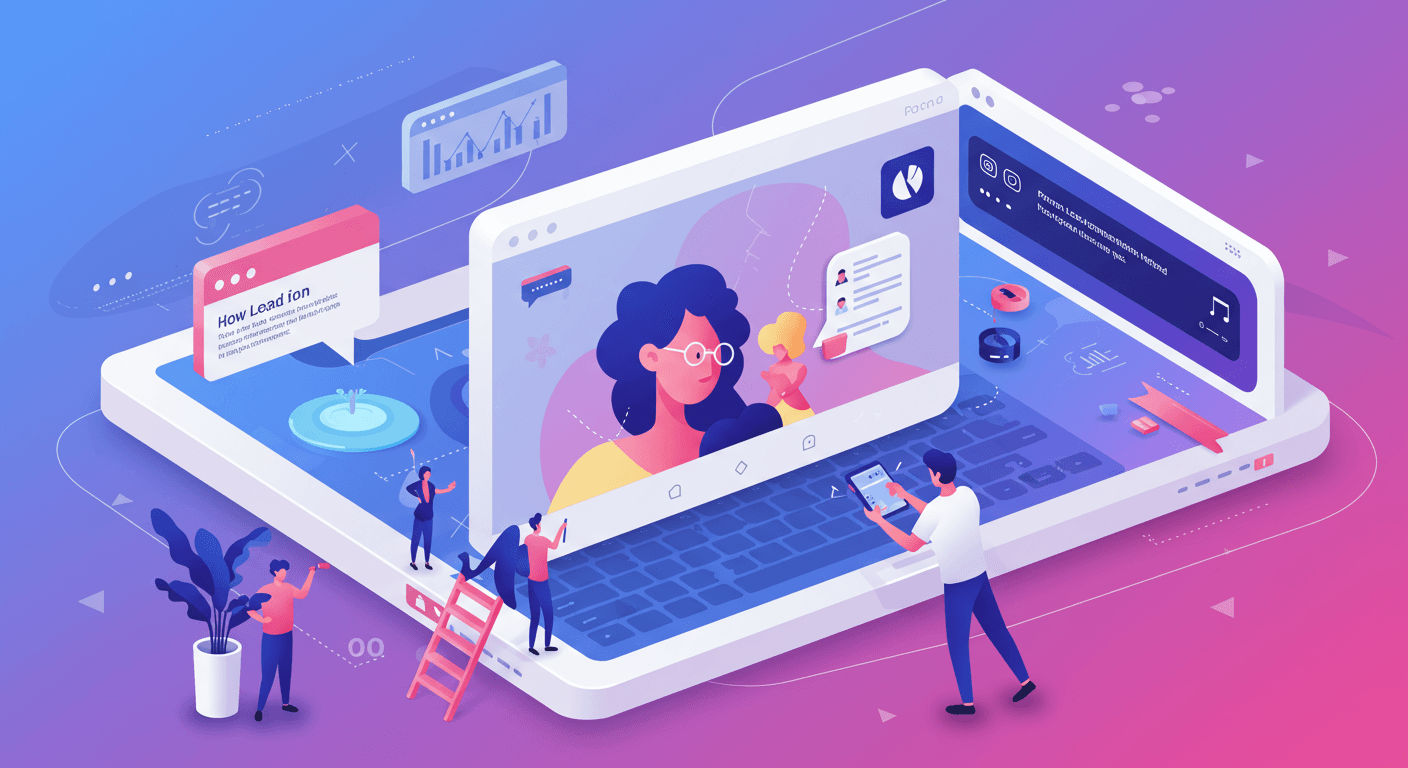Imagine riding your bike on a sunny summer day, pedaling furiously up steep hills, hair blowing in the wind. You're probably not thinking about the mechanics of your bike or how they all work together to propel you forward.
But without your pedaling, the bike wouldn't move. Or, if the tires were missing, you'd be stuck. Everything needs to work in unison for you to ride your bike. The same goes for lead generation and customer acquisition.
Without leads to convert into customers, your customer acquisition efforts stall (just like your bike). Lead gen is the fuel that powers customer acquisition. We're breaking down how both function independently and the connection between the two, plus a strategy for converting leads into loyal customers with betterfeedback.ai.
What is Lead Generation?
Lead generation is the process of attracting potential customers to your business and nurturing their interest to convert them into paying customers. It's about sparking curiosity and guiding individuals toward your product or service as the solution to their needs.
Organizations often use valuable content, like in-depth industry reports, engaging webinars, or exclusive discounts, and informative online content like blog posts to attract leads. Once you have a lead, you can nurture them with tailored email campaigns, building brand awareness and showcasing how your product or service solves their specific problems.
What is Customer Acquisition?
Like lead generation, customer acquisition aims to gain more customers. However, they aren't the same; they're interconnected.
Customer acquisition is the process of turning qualified leads into paying customers. It includes lead generation, nurturing sequences, and ultimately, securing that first purchase or subscription.
Lead Gen, Then Customer Acquisition
Simply put, there is no customer without lead generation. Every customer starts as a lead—someone who attended a webinar, heard about you from a friend, or followed you on social media and then joined your email list.
No leads, no nurturing, no converting into customers. It's that simple.
Start with Data
Lead generation isn’t the first step in the customer acquisition process. Collecting data that turns a casual visitor into a hot lead is. Many companies leverage marketing efforts to gather that data, like requiring an email address to register for a webinar or get their results from your product recommendation survey on betterfeedback.ai.
But why is data so important? When you have high-quality data, you get to know your leads on a deeper level. You understand their preferences, who they are, and how to more effectively nurture them into eventual customers.
Data gives you the power to design more personalized experiences.
Types of Data
While zero-party data—data straight from your customers—is the most trustworthy data you can get, it's not the only kind. Leverage a mix of zero, first, second, and third-party data to collect as much information as possible on your leads.
Data Shortage or Data Silo?
While it sometimes feels like we're missing the data we need to understand our customers fully or prove return on investment (ROI), the truth is that there's no shortage of data. Most organizations collect vast amounts of it.
What's really going on is your data is living in silos across teams and tools.
Sales may collect data in a CRM like Salesforce. Your customer support team's data may live in Zendesk. And your marketing team may have data in Hotjar, Google Analytics, and many other tools.
And none of your tools talk to each other.
When you have dozens of tools in your tech stack that don't communicate with each other, you create data silos that make it impossible to paint a clear picture of your lead. And when you don't understand your leads, you can't create the personalized outreach necessary to drive your customer acquisition process.
Personalized Experiences for Every Lead
You already know data is crucial in building better, more personalized experiences for your leads and customers. But that's only one part of the puzzle.
Leads engage with your company in a thousand ways before becoming customers. This means they also likely interact with different teams at touchpoints along their journey to becoming a customer.
But your leads expect a single seamless experience, whether they're talking to your sales team, filling out a product survey, or contacting customer support. Everyone across your organization needs to align on what that experience looks like and how you can make sure every lead's experience is personalized.
Customer Acquisition and Lead Generation Strategies
While lead generation and customer acquisition are both part of the same process, they each require their own strategy.
Think of your lead gen strategy as creating a neverending pipeline of leads to be nurtured over time. There are a few basic strategies any team can implement, like:
- Creating high-quality content that builds brand awareness and trust with leads. Once you give them a reason to keep coming back, they'll likely sign up for your email newsletter so you can nurture them.
- Optimizing lead magnets to collect enough information without overwhelming potential leads. Someone earlier in the customer journey may not be willing to provide extra details like job title, organization, or company size.
- Focusing on search engine optimization (SEO) to drive organic traffic to your site, especially to lead generation landing pages.
- Using giveaways, contests, or product surveys like those offered by betterfeedback.ai to get people to share their contact information with you.
- Offering free trials or a freemium version of your product in exchange for their email addresses. Again, to send tailored marketing campaigns that nurture them into customers over time.
There are so many things to consider when building your lead generation strategy, but the single most important thing you need to remember is that you need to provide something just as valuable as your leads' contact information in return.
So, you've got leads coming in. Now what? Customer acquisition. And just like with lead gen, you need a solid strategy to convert leads. Here are a few things to consider:
- What channels will you use? There's a plethora of ways to convert customers—your website, social channels, blog, ads, and more. Which makes the most sense for your organization?
- Where are your leads in their buying journey? Lead qualification will help you understand where leads are and the content or actions that will move them closer to becoming a customer.
- What's the most effective way to nurture our leads? While email marketing is an effective option, ask yourself how else you can keep your leads engaged.
- Can we offer free trials or a free self-serve product offering? Think of these as previews of your product and what leads will get (and more) when they become paying customers.
- How can we incentivize existing customers to refer more customers? Loyalty and affiliate programs can bring in more leads... and customers.
Again, customer acquisition isn't just spamming leads with sales content or marketing emails. It's about providing value and proving that your product or service can help them.
It's All About Knowing Your Audience
Both lead gen and customer acquisition require you to know your future customers, and doing so requires data. That data helps you understand what leads are interested in so you can create compelling lead magnets. It also makes for more effective targeting by meeting leads where they are, whether it's on social, in the inbox, or at events.
But data also paints a complete picture of your leads to create personalized experiences.
So, what's the best way to get data on your leads and customers? Get data straight from them with betterfeedback.ai



